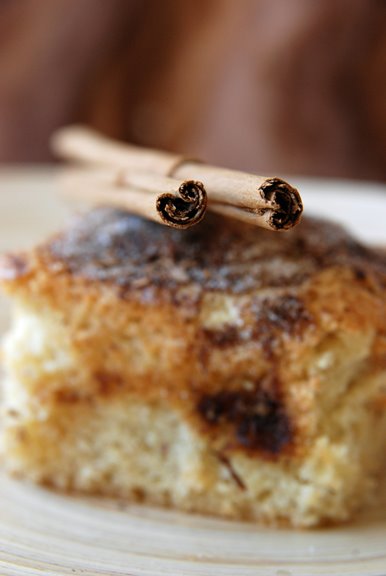.jpg)
I've fallen...
I have sunk so low
Sarah McLachlan – Fallen
In the unfair world of food, a chocolate soufflé is allowed to take a breath, but a cheesy egg soufflé is not. This soufflé is filled with a cheese called comté (pronounced con-tay) from a terroir that spans the Jura and the Doubs departments in France. This region learned how to transform milk into a cheese that could be preserved and gained status as one of the first cheeses with the Appellation d’Origine Contrôlée (AOC) signature. Unfortunately, I couldn't find this distinguished cheese in my grocery store so I used a humble, but satisfying tangy Swiss cheese instead.
Roux…béchamel…Mornay…meringue are all techniques learned in previous classes that merge in this recipe to make a delicate, diva-like, spectacular dish. First, prepare the milk by bringing it to a boil. Don't turn your back on it for too long or the neglected mixture will punish you with spilled, scorched milk on your stove. While watching the milk, make a roux. Whisk in the hot, un-neglected milk and stir until the sauce becomes thick. Now the sauce is christened a béchamel. Season with salt, pepper and nutmeg. Simmer and whisk for a while to encourage the flavors to develop and avoid burning and sticking. Remove it from the heat and add the cheese. Now it's named Mornay. Next whisk in the yolks and set aside.
The last step is to make a meringue. After the meringue is at its perfect, softly-whipped-but-holding peaks stage, sacrifice some of it (about a third) to lighten the Mornay mixture. Carefully fold in the remaining whites {remembering your Grandma looking over your shoulder as you folded the egg whites into waffle batter when you were just a head taller than the counter, pointing out all the whites that needed hiding}.
Even pouring the mixture into the soufflé dish requires a patient, careful hand. You must avoid dripping any batter on the sides so that the soufflé can climb the dish without touching a patch of burnt-on batter. Then you must tap the dish gently to remove air bubbles. After putting it in the oven, you must not open the oven door while it's baking. And you must not slam the oven door. {Whisper soufflé and blow it a kiss.}
Finally, after baking, hold your breath. Carefully remove the soufflés from the oven. Exhale slowly. {Photograph quickly.} Devour.
Recipe: Soufflé au Comté (Cheese Soufflé)
Serves: 6+mise+en+place.jpg)
Ingredients:
1¼ cups grated Comte or other imported Swiss cheese such as Gruyere or Emmenthal
1¼ cups milk
3 tablespoons unsalted butter
¼ cup all-purpose flour
Salt
White pepper
Freshly grated nutmeg
4 eggs, separated
Unsalted butter, softened, for soufflé mold
You can find the recipe for Soufflé au Comté (Cheese Soufflé) in the book Le
Cordon Bleu at Home (affiliate link). To see how the rest of the Whisk Wednesdays group fared with their recipe, click here (or check out the sidebar) and then click on each blogger!
Tasting Notes
This is a creamy, airy, and comforting dish that gives you a faint whistle before deflating. Not difficult to make, but impressive if you're courageous, especially if you attempt to add bacon, lobster, or asparagus. Taste and enjoy its fleeting beauty.
"The only thing that will make a soufflé fall is if it knows you are afraid of it."
— James Beard
• 65 sq foot kitchen: Leeks and Gruyère Soufflé, Step-by-Step
• La Tartine Gourmande: Soufflé, if I Blow, Will it Fall?
Next Class
• Bavarois à la Vanille, Coulis de Framboise (Vanilla Bavarian Cream with Raspberry Coulis)
. . . . . . . . . .
Running total: $1,425.65 + $8.76 = $1,434.41
($1.46 per serving)
Butter used so far: 12 pounds, 23.5 tablespoons
. . . . . . . . . .
More to Explore:




.jpg)


.jpg)
.jpg)
+mise+en+place.jpg)



.jpg)
+mise+en+place.jpg)

.jpg)
.jpg)
+and+Mousseline+de+C%C3%A9leri+Rave+(Creamed+Celery+Root+Pur%C3%A9e)+mise+en+place.jpg)


.jpg)






